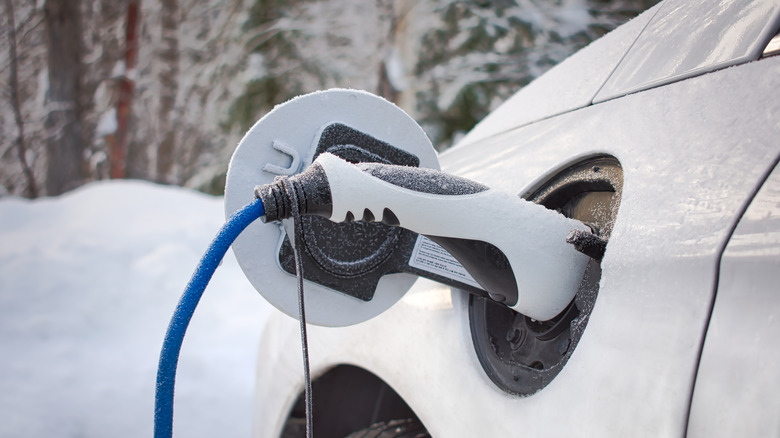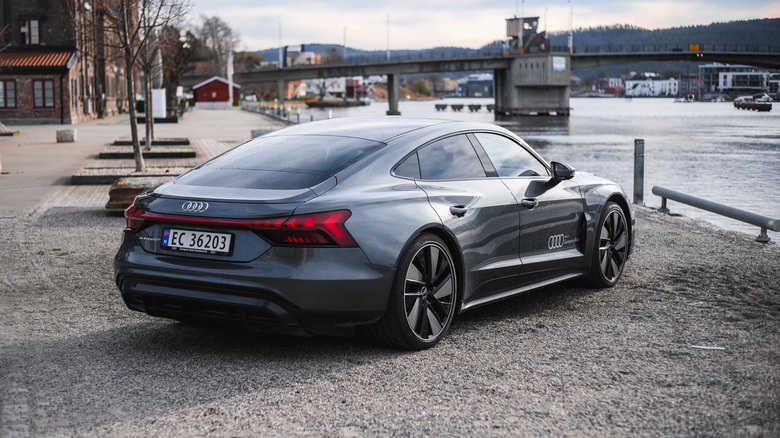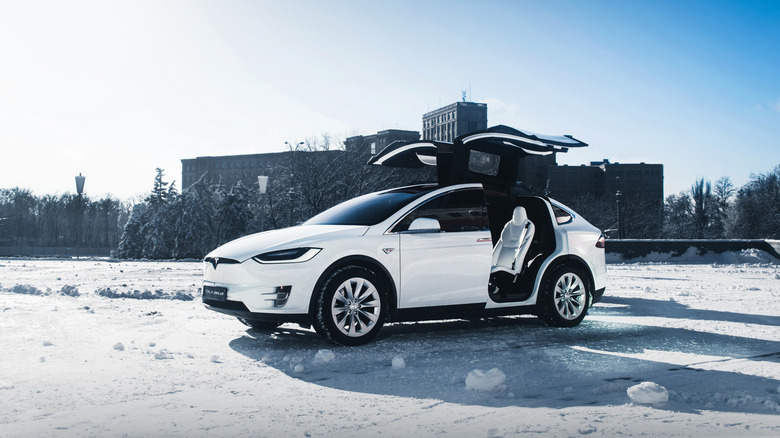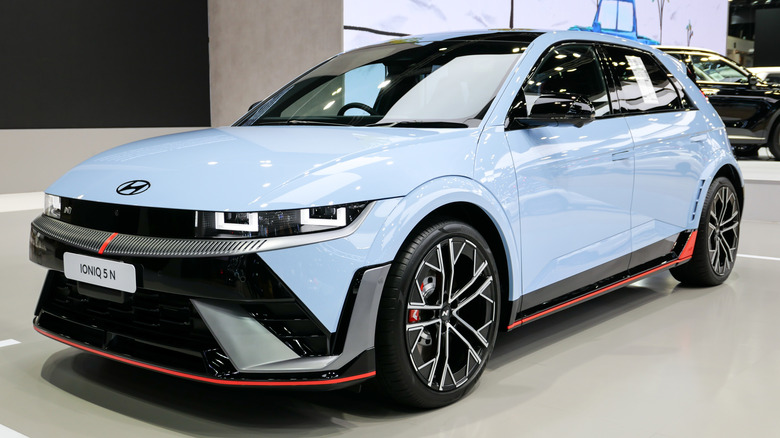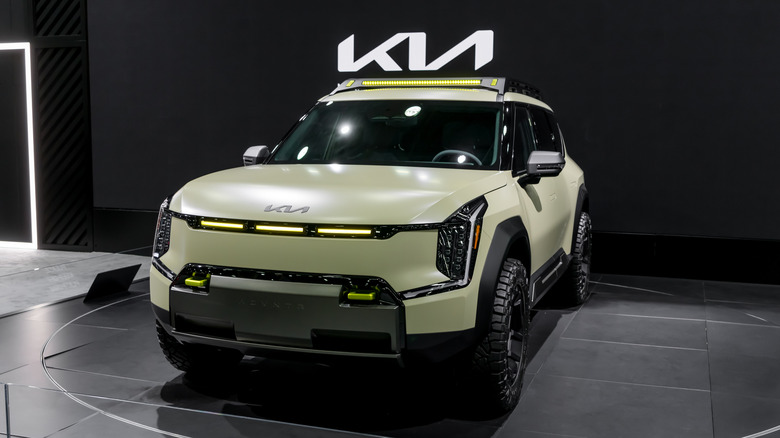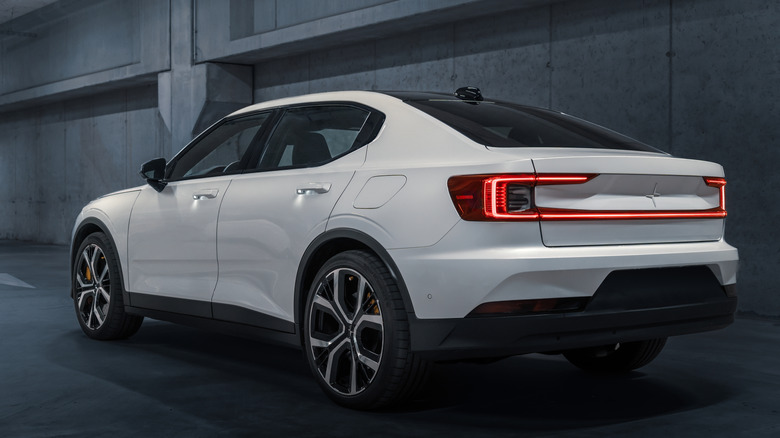The 5 Best EVs For Winter And Snow, According To Experts
Driving an electric vehicle (EV) in wintery, snowy conditions poses unique challenges compared to warmer seasons, and selecting the right EV for winter use in snow means paying attention to specific technical and performance details. Cold weather impacts the driving dynamics due to slick surfaces, snow, and ice, but equally important is the battery performance. Lithium-ion cells exhibit slower chemical reactions at low temperatures, resulting in less energy available and reduced charging rates. Additionally, cabin heating in EVs draws directly from the battery, further reducing effective driving range.
Beyond range loss, winter driving demands strong traction, all-wheel drive (AWD) or four-wheel drive capability, a well-engineered stability control system, and tires suited for snow and ice. When evaluating EVs for winter use, key criteria should include: how much range is lost in cold temperatures (how resilient the battery and thermal systems are), whether the vehicle supports a heat pump or other efficient cabin and battery heating, how robust the driveline and AWD systems are for low-grip situations, as well as charging performance in cold weather.
Studies show that in freezing ambient conditions, many EVs typically fall within 75% to 85% of their ideal temperature range. Vehicles equipped with a heat pump tend to lose less range. In snowy terrain, vehicles with low center of gravity (thanks to ground-mounted battery packs), good chassis stability, and dedicated winter/traction models will fare better. Let's review five EVs that stand out for winter and snow performance, combining range resilience and capable traction.
Audi e-tron (premium plus)
The Audi e-tron stands out for winter driving partially because of its dual-motor "e-quatro" all-wheel drive system, which delivers torque to both front and rear axles and enables stable traction on slippery roads. The battery pack is mounted low in the chassis, lowering the center of gravity for improved grip on snow-covered surfaces. The air suspension option helps maintain ride height and stability when encountering snow banks and icy patches. On the thermal side, Audi's winter-specific testing in Norway shows that even in sub-zero temperatures the e-tron maintained a large fraction of its claimed range. In a "Handling the Norwegian winter" report, Audi noted winter range being "sufficient" for daily usage in Norway's cabin-charged usage scenario. According to a broader dataset, EVs equipped with heat pumps (which the e-tron premium plus has) retain about 83% of their ideal-temperature range in freezing conditions.
On the handling side, the combination of immediate torque from the dual motors, electronic stability control tuned for low-grip conditions, and an under-floor battery that provides mass centralisation means snow driving is more predictable. The downside remains that the e-tron is still a large, heavy SUV with more mass to push through deep snow, which increases energy consumption. For charging, while cold batteries slow down DC-fast charging, the e-tron benefits from pre-conditioning (battery warming)when plugged in, which mitigates cold-charger inefficiencies. Overall, for drivers in cold climates who need genuine winter capability, the e-tron is technically one of the better-engineered EVs for winter.
Tesla Model X
Tesla Model X brings a high-tech package that makes it especially well-suited for snow-covered roads and sub-zero driving conditions. The SUV's dual or tri-motor All Wheel Drive setup provides strong torque to both front and rear axles, allowing stable acceleration from slippery surfaces and the ability to handle snow-packed inclines with more confidence. Additionally, the Model X's air suspension offers adjustable ride height, raising the chassis for deeper snow or unploughed winter roads, reducing the chance of getting stuck. In a cold-weather study, Model X (with heat pump) showed one of the most minor range losses among EVs, retaining roughly 89% of its ideal-temperature range in freezing conditions.
In terms of battery performance, the Model X benefits from pre-conditioning the battery and cabin while plugged in. The Model X manual explicitly states that scheduling pre-conditioning improves both cabin comfort and battery readiness when temperatures drop. By warming the pack before departure, the vehicle mitigates the typical winter chemistry slowdown in lithium-ion cells and reduces the charging-rate penalty that cold batteries often incur.
On snow, the combination of low center of gravity due to the floor-mounted battery, torque vectoring from the AWD system, and the optional adjustable ride height allows the Model X to transition more smoothly from cleared pavement to snowy terrain. That said, the weight and size of large SUVs remain negative factors. Deeper snow, heavy drifts, or off-road snowbanks still increase energy consumption and limit range more rapidly than in smaller EVs.
Hyundai Ioniq 5
The Hyundai Ioniq 5 brings modern architecture beneficial for winter. An 800-volt electrical system will lower current at a given power, reducing resistive losses and improving charging performance in cold conditions. In a cold-weather 70 mph highway test, the AWD version of the Ioniq 5 covered 195 miles starting from full charge when the ambient temperature was around minus 6.6 degrees Celsius (20 degrees Fahrenheit). Compared to its warm-weather performance (227 miles for the same test), that's a drop of about 14%. On winter handling, the Ioniq 5's floor-mounted battery contributes to a low center of gravity, which helps on snow-covered roads to resist sliding or oversteer. The drivetrain allows for decent drive control.
That being said, Ioniq 5's charging experience in near-freezing or freezing temperatures is not that great. Charging power remains significantly depressed until the battery warms up. In the first 18 minutes of charging, it will average only about 63 kW at around minus 3 degrees Celsius. As its peak values at warm conditions are above 200 kW, that's a significant drop in efficiency. In terms of range loss in winter, broader datasets suggest modern EVs average about 80% of their ideal conditions range, and the Ioniq 5 sits in the realistic expectation bracket. For drivers in snowy regions, the Ioniq 5 is a technically sound choice. It has an efficient architecture, a competent AWD variant, and modern thermal management that supports winter driving. However, as with any EV in snow, pairing with high-quality winter tires and paying attention to charging behavior in the cold remains critical.
Kia EV9
The Kia EV9 brings a compelling package for winter and snow driving, especially when you dig into its technical setup for cold-weather conditions. At its core, EV9 employs an 800-volt architecture (shared across Kia-Hyundai's new EV platform), which reduces resistive losses during charging and high-power operation. This is helpful when the battery is cold and chemical activity is sluggish. In a temperature range around 18 degrees Fahrenheit (minus 8 degrees Celsius), one test recorded the EV9 at 193 miles from an 80% state of charge, extrapolating to 241 miles at 100%, equating to only about 11% drop from its warm-weather estimate.
On the battery and charging side, Kia incorporates battery conditioning (pre-heating) and fast-charging support rated up to 210 kW. During cold-weather driving, the Kia EV9 achieved up to 160 kW at a 150 kW (limited) station, which is strong given the conditions. As for handling the snow, the EV9's dual motor AWD variant provides good stability. The low center of gravity provided by the floor-mounted battery helps reduce roll and improve the grip. The electronics adjust torque between axles under low-traction winter surfaces.
On the flip side, its large size and mass (it's a three-row SUV) still mean more energy is needed to push through snow or unplowed roads. All in all, for drivers who expect heavy snow, cold starts, and winter commutes, the EV9 stands out as one of the more technically capable EVs for winter, thanks to its efficient architecture, AWD traction, and good range in the cold.
Polestar 2
The Polestar 2 is perhaps notable among this group for how well it retains range in winter conditions. According to the Canadian Automobile Association (CAA) winter range test, when driven in ambient temperatures between minus 7 and minus 15 degrees Celsius, the Polestar 2 lost just 14% of its estimated range. That's significantly better than many EVs. For winter handling, the Polestar's dual-motor AWD version offers strong low-grip dynamics: precise torque delivery to each axle, responsive traction control, and a chassis tuned for stability rather than excessive sportiness.
On the battery/thermal side, Polestar 2's thermal management is well-executed and the data suggests it maintains usable energy more effectively in cold environments than many of its peers. For example, in combined cold-weather range studies, EVs equipped with a heat pump and efficient thermal systems averaged retention of 80% of ideal-condition range. Polestar 2 is no different. In practical terms, this EV gives a higher fraction of expected range in snowy and icy conditions, reducing the "range anxiety" in winter.
But there is one caveat. While handling is strong, deep-snow off-road capability or high clearance terrain isn't necessarily its primary focus, as Polestar 2 remains a hatchback with a sporty feel to it. So, while Polestar 2 is highly capable for winter road use, drivers needing off-road snow performance might still need to consider ground clearance and dedicated tires.
